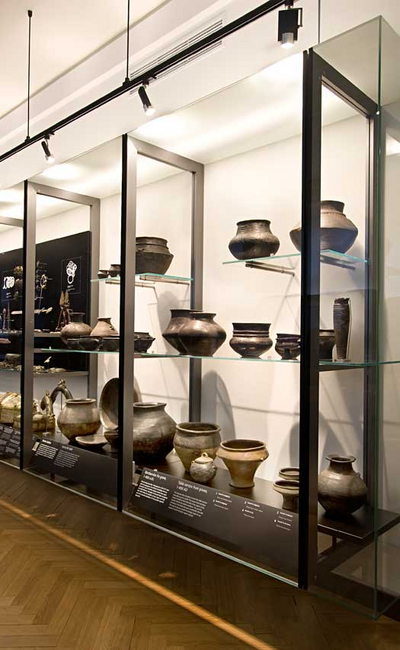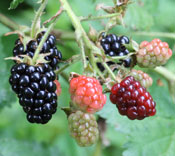The hospitable housewife from Juellinge
A Roman ladle and a bronze cauldron were placed in the woman from Juellinge’s grave. She had perhaps used these utensils to serve drinks for her fine guests. At such feasts meat dishes were probably also served in the form of joints of lamb, pork and beef. Hospitable hosts attained a high level of prestige in Iron Age society. This talent was marked at the burial by giving the dead a table service and food for their last journey.
A typical meal in the Iron Age might consist of a soup of corn and seeds mixed with meat. Milk and cheese accompanied this. Those living near the sea, lakes and water courses also ate fish and shellfish. Raspberries, blackberries, cowberries, blueberries and rosehips provided important vitamins. Corn was used to make beer. Food was stored and served in various pottery vessels and dishes. Such kitchen equipment was also placed in the graves of the Iron Age people.


